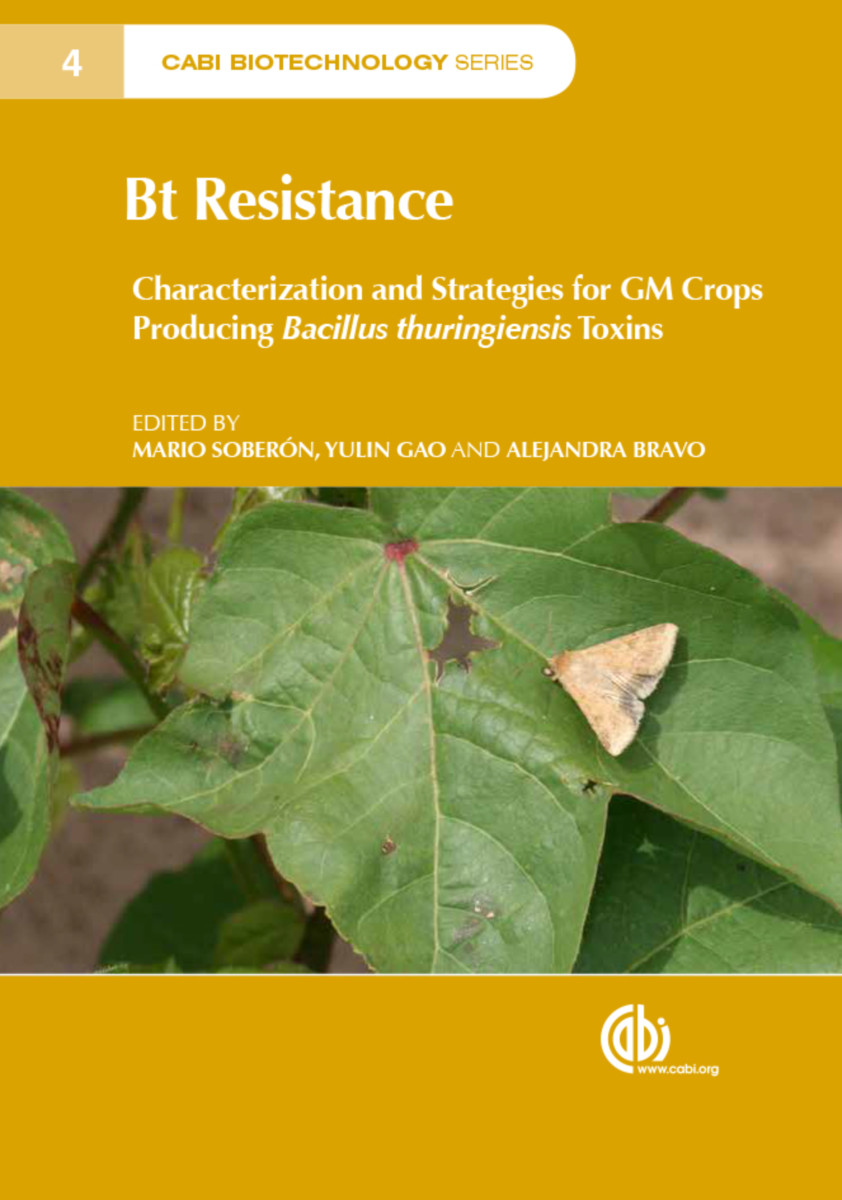Bt Resistance
Characterization and Strategies for GM Crops Expressing Bacillus thuringiensis Toxins
- Publisher
CABI - Published
3rd June 2015 - ISBN 9781780644370
- Language English
- Pages 226 pp.
- Size 6.75" x 9.5"
Bacillus thuringiensis (Bt) bacteria use Cry proteins to kill their insect larval hosts. The expression of certain Cry toxins in transgenic crops has been widely used to achieve efficient control of insect pests. This book describes the use of Bt crops and the emerging problem of resistance, recent progress in understanding the mechanism of action of Bt toxins, and different resistance mechanisms and strategies to cope with resistance in the field. It describes resistant insects found in the field in different countries, particularly in the developing world, and ways to counter resistance such as gene stalking, refuges, modified toxins and gene discovery of novel toxins with different mode of action.
Part 1: The extent use of Bt crops and the emerging problem of resistance
Chapter 1: Successes and failures of transgenic Bt crops: Global patterns of field-evolved resistance
Chapter 2: Status of resistance to Bt cotton in China: Cotton Bollworm and Pink bollworm
Chapter 3: Insect Resistance to Bt toxins in Brazil and Latin America
Chapter 4: Resistance of Busseola fusca to Cry1Ab Bt-maize plants in South Africa
Chapter 5: Bt resistance of cabbage loopers, Trichoplusia ni in a greenhouse setting: occurrence, costs, spread, and management.
Part 2: Mechanism of action of Bt toxins and different resistance mechanisms
Chapter 6: Different models of the mode of action of 3d-Cry toxins from Bacillus thuringiensis
Chapter 7: Roles of insect midgut cadherin in Bt intoxication and resistance.
Chapter 8: Mechanism of Cry1Ac resistance in cabbage looper -- A resistance mechanism selected in insect populations in agricultural environment.
Chapter 9: Roles of ABC proteins in the mechanism and management of Bt resistance
Chapter 10: The role of proteolysis in the biological activity of Bacillus thuringiensis insecticidal crystal proteins
Chapter 11: The lessons that Caenorhabditis elegans have taught us about mechanism of action of Crystal proteins
Part 3: Ways to counter resistance
Chapter 12: The development and the prospect of discovery of Bacillus thuringiensis toxin genes
Chapter 13: Cry toxin binding site models and their use in strategies to delay resistance evolution
Chapter 14: Countering pest resistance with genetically modified Bt toxins--Mario Soberón, Blanca Ines García-Gómez, Sabino Pacheco, Jorge Sanchez,
Chapter 15: RNAi strategy for crop protection against insects and other pests.
Part 4: Insect resistance management and integrated pest management
Chapter 16: Resistance management for Bt corn and above-ground lepidopteran targets in the United States: from single gene to pyrminded traits
Chapter 17: IRM and IPM for Bt Crops: Increasing Prospects for an Areawide View
Mario Soberón
Mario Soberón teaches at the Instituto de Biotecnologia UNAM, Mexico.
Yulin Gao
Yulin Gao is affiliated with the Chinese Academy of Agricultural Science.
Alejandra Bravo
Alejandra Bravo is with the Universidad Nacional Autónoma de México.


